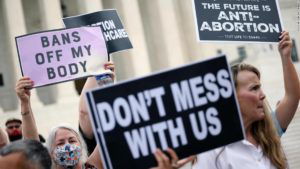
Progress on Visa Reform Does Not Match Rhetoric in Wake of Modi’s U.S. Visit
Nov 18, 2014
Houston, TX (Law Firm Newswire) November 18, 2014 – The Indian premier has offered initiatives for reform, but U.S. policy remains largely frozen by domestic politics.
Indian Prime Minister Narendra Modi’s historic, early-fall trip to the United States was marked by much fanfare as he captivated audiences in New York and Washington, D.C. However, despite the high hopes that Modi’s first official foray to this country would help engender movement on visa reform (among other areas of U.S.-Indian common interest) a more liberal policy on visas has not been forthcoming from a U.S. government paralyzed by a politics-driven gridlock.
New Delhi has unveiled more generous Indian visa policies, including the issuance of 10-year visas for U.S. nationals, the availability of lifelong visas to people of Indian origin, and the upon-arrival-in-India processing of visas for U.S. tourists, all of which Modi trumpeted during his trip here.
Modi’s references to his government’s initiatives were warmly received at New York’s Madison Square Garden, where a largely Indian-American audience was riveted by his speech. In addition, the premier had the full attention of President Obama during the Washington segment of his visit, which was capped off by a joint Obama-Modi op-ed in the Washington Post. But visa reform advocates have been left wanting, and even nervous, that a restrictive Senate bill on immigration reform may pass the House of Representatives.
“The large array of American companies with a significant need for skilled workers in the fields of science, technology, engineering and mathematics have a big stake in expanding the number of visas, especially H-1B visas, that the U.S. government makes available every year,” said Annie Banerjee, of Law Offices of Annie Banerjee, a prominent attorney in Houston who specializes in immigration law. “But for now, employment-related planning for these firms is handicapped by the uncertainty in Washington.”
One provision of the Senate bill has many firms in the United States and at Indian outsourcing companies particularly worried, as it would limit the number of H-1B visa holders within any U.S. firm to no more than 15 percent of its workforce.
Currently, 65,000 H-1B visas are granted each year, and the slots are quickly taken once the enrollment period for them begins every April.
“For Indian outsourcing companies, the importance of a more generous U.S. policy on visas cannot be underestimated,” Banerjee said. “And the American companies that chronically suffer unmet needs for STEM workers are also hurt by the unrealistically low U.S. ceiling on visas.”
Learn more at http://www.visatous.com
Law Offices of Annie Banerjee
131 Brooks Street, Suite #300
Sugar Land, Texas 77478
Phone: (281) 242-9139
- Allure of U.S. Real Estate Attracts Indian Buyers
The acquisition of gold, and especially gold jewelry, has traditionally been the favored means by which Indians invest their discretionary income. But recent statistics demonstrate that for Indian citizens with the resources to do so, the purchase of American real estate has become the new golden opportunity for investment and savings. Gold has long been […] - U.S. Opens 2016 Applications for Diversity Visa Program Immigrants
The United States has often been compared to a “melting pot” or a “salad bowl” in its richness of ethnic, religious and cultural diversity. Since colonial times, immigration has played a major role in American diversity, and U.S. immigration policy has increasingly favored a more even distribution in the national sources of immigration. One legislative […] - American Sikhs Face Undue Violence and Persecution in Wake of 9/11 and Presence of ISIS Threats
The Indian Plate is officially considered a subcontinent. Its land mass is great enough to earn the subcontinental rank, but its cultural, religious and linguistic bounty really puts it really more in the league with other full-fledged continents. As a result, the Indian subcontinent sends immigrants from a variety of ethnic and religious backgrounds to […]




